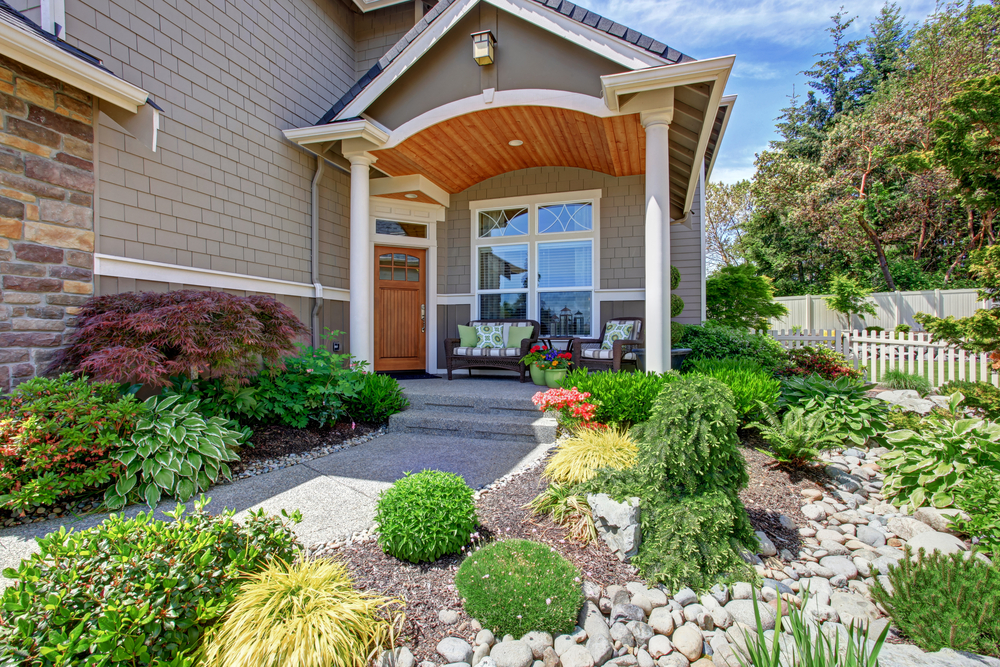How to Boost Curb Appeal for Single Family Properties

Establishing and maintaining healthy single family landscapes to enhance curb appeal taking a little more muscle
Your property’s landscape can play a big role in securing new tenants during peak leasing season. An eye-catching lawn, beds and yard décor go a long way toward first impressions. Curb appeal sells.
Designing and constructing any landscape plan – whether for a new home or renovation – requires homework. Maintenance of lawns and beds to keep them healthy, weed-free and attractive is becoming just as strategic, say landscape professionals.
Eliminating weeds is taking longer in some cases
Traditionally, the best defense against weeds has been building a healthy lawn, then treating with pre-emergents for weed control using fast-acting and effective chemicals and sprays.
For tough spots, highly potent chemicals such as Monosodium methanearsonate (MSMA) have provided quick relief of weeds like crabgrass, dallisgrass, Dandelions. However, after almost 60 years, MSMA is no longer an option. In 2013, the Environmental Protection Agency completed a phase-out of the chemical, which has been found to be highly toxic in an organic state. Weed control products on the market today take longer to be effective and often require as many as three doses, says Chris Lee, President of Earthworks.
“The alternative is far less effective and more expensive,” Lee says. “Slower MOAs (mechanisms of action) are far more expensive. New MOAs are less lethal, requiring multiple treatment.”
Weed infested lawns can no longer get a quick remedy, and the antidote is much pricier. Sprays are still effective at killing weeds but overspray can damage grass. In some cases, lawn companies are applying small doses of liquid weed killer by daubing the chemical onto the weed, careful not to touch the grass.
“You can imagine how much time that takes,” Lee said.
Understanding the obstacles in creating a healthy landscape
The solution is to establish and maintain a healthy lawn that will discourage weeds to take up residence. Proper irrigation, turf management, cleanup, trimming and pruning and consistent, general attention to the lawn and beds go a long way.
As simple as that may sound, a number of variables affecting lawn care have made the road to a beautiful landscape a little bumpy. Knowing the factors in place can help property management companies arrive at the right solution for keeping lawns in tip-top shape.
In southern climates, the battle has intensified with milder temperatures that have extended the germination cycles of weeds and failed to kill insects that feed on plants and lawns. Established turf lawns like Bermuda, Tiff, Zoysia and St. Augustine have a greater chance of fending weeds and insects.
“Healthy St. Augustine is probably the best of the best,” Lee said. “It forms a thickness, grows through rhizomes and weaves its way to form a nice, dense protection layer. Zoysia is good alternative, the thicker the grass the better. It’s a denser, thicker grass by nature. That was the way it was engineered.
Tiff grasses and some varieties of Bermuda are superior for weed control, even versus common Bermuda.”
St. Augustine can succumb to grubs and contract the fungus commonly known as brown patch. Both can destroy root systems and need immediate attention when signs of distress are visible.
Offset limited watering by adjusting mower settings, filling in bald spots
Water restrictions still in effect in many areas affected by the drought a few years ago are also and obstacle. Some cities and municipalities still limit watering to one or two times per week and assess hefty fines for violations.
Making the most of your irrigation time is essential, Lee says. Annual inspection of sprinkler systems, whether those using heads or for soaker systems, can ensure that water is being properly applied to the landscape. The last thing a property owner wants to see is wasted water from broken heads or runoff because sprinklers aren’t aligned properly.
“Another thing frankly that affects weed control is water restrictions,” Lee said. “Watering two days a week keeps turf alive and somewhat green, but it’s certainly not as thick, as vigorous. The turf has adjusted and it’s a little bit thinner, not as dominate and that allows for opportunity for weed growth.”
Lee says it’s important to address bald spots in the yard and plant sod or seed to fill and extended the weave of roots and blades of grass that make lawns stronger. Also, simply adjusting the mower height so lawns are two or three inches tall can help maximize water absorption and repel weed seedlings. Simply, a taller lawn takes longer for the seed to penetrate the ground.
Of course, the recommendations are in addition to preventative weed control and proper landscape fertilization.
“It’s about everything you can do to keep your turf healthy and prevent weeds from taking over in the first place,” he said. “The worse the lawn gets, the harder it is to get back in control. The further you let it go, the bigger mess you’re in.”







